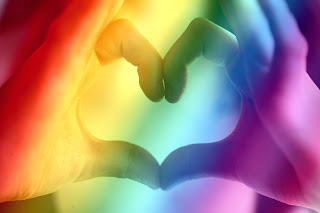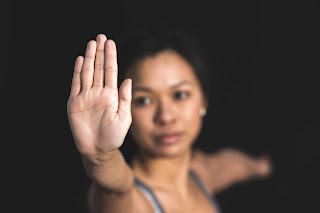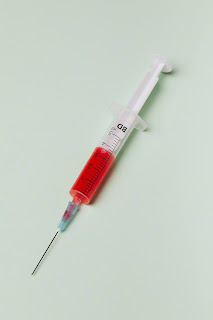How does Reiki work with the chakra system to aid stress release and promote healing in the body?
How does Reiki work with the chakra system to aid stress release and promote healing in the body?
Reiki is a natural form of energy healing which originates from Japan and allows the practitioner to channel energy from a higher source (not themselves which can be a misconception) into the palms of their hands so that blocked energy in the receiver can be redistributed throughout the body releasing blockages to create balance and harmony mentally, physically, emotionally and spiritually.
Reiki is a gentle, highly effective treatment which is performed through the clothes and there are numerous benefits including relief from Stress, removal of emotional blockages, improves release of toxins therefore strengthening the immune system, re balancing the body energetically and inducing a sense of peace and tranquillity. Although Reiki is very safe and can be used as an alternative therapy with a variety of medical conditions it is not advisable to practice if the receiver has a pace maker fitted or is Diabetic, the reasons being that the flow of energy can affect the heart beat and amount of insulin produced.
Any age from young children to the elderly are able to benefit and the use of relevant crystals can be incorporated to accelerate the rate of healing over the chakra points on the body which are the main focus. There are set placements for the areas to be worked upon and the practitioner can work hands directly on the body, hands off or long distance healing all of which can be equally effective. A balanced chakra system is essential for our health and wellbeing as each chakra is a spinning vortex which is not visible to the naked eye, yet allows energy to move throughout the body and each one corresponds to a different aspect of who you are as an individual person.
There are numerous chakras of varying sizes but there are 7 main ones located in the spine, all of which have their own colour, characteristics and associated endocrine gland governing various bodily systems. Therefore if there is ever a health concern in a certain area of the body, the relevant chakra which is associated will be compromised in some way and not operating effectively.
For example if we suffer from heart break this will affect the heart chakra, we may close ourselves down to deal with the upset but in doing so blockages are formed and the energy can no longer actively flow in that area which in the long term can cause various problems in every aspect of our being particularly our romantic relationships until we are able to once again open that chakra.
Therefore due to past and present life experiences the chakras can either be closed, balanced or overly active and the health of the chakras will have a direct effect on your emotional and physical wellbeing in either a negative way if the chakra is overly active or closed, or a positive way if the chakra is balanced. The names, colours, position, governing characteristics and associated gland with each chakra is as follows: The 1st Chakra is known as the Root or Muladhara in Sanskrit and is connected to the reproductive organs. It is red or black and positioned in the groin area or just below, it is responsible for survival, grounding, security and instilling boundaries and is considered to be the most important chakra as it is the gateway for the flow of energy as it flows upwards through the ground into the feet, up the legs through feeder channels and then into the chakra system. Therefore if there are issues with this chakra the entire system will be effected and energy will not be flowing at an optimal level throughout the body.
The second chakra is known as the Sacral or Svadhisthana, it is orange and located just below the navel and above the Root chakra, connected to the stomach, kidneys and adrenals, it is responsible for sexual pleasure, fun, creativity and social abundance, The third chakra is the Solar Plexus or Manipura, it is yellow and located about the Sacral chakra, just above the navel and is connected to the pancreas and digestive system. It is responsible for will power, personal power, confidence and leadership.
The fourth chakra is the heart or Anahata, it is green or pink for the dual ability of being able to give and receive love and is located in the heart area above the Solar Plexus and unsurprisingly is responsible for love, compassion, relationships and personal happiness. It is connected to the heart, lungs and thymus.
The fifth chakra is the Throat or Vishuddha and is blue, located above the heart in the throat area. The throat chakra is responsible for communication, expression, manifestation and inner dialogue and is connected to the thyroid, throat and mouth. The sixth chakra is the third eye or Ajna, it is purple or indigo and is located just above the centre of where the eyebrows meet and is above the throat chakra, it is responsible for physic insight, clarity, focus and wisdom and is connected to the brain, central nervous system and pituitary gland.
The seventh chakra is the crown or Sahasrara ,it can be white or violet and is the final main chakra with the highest spiritual vibration and located at the top of the head above the Third eye. It is responsible for purpose, connection to the higher self, insight and divine guidance. It is also connected to the upper brain and pineal gland and therefore works in unison with the third eye.
By making the active choice to strengthen the chakra system it will improve those particular areas of our life to encourage change, for example if we want to attract love either in the form of self-love or attracting a love interest we need to work on the heart chakra as it may be blocked, it can be helpful to also wear colours, or eat foods in the corresponding colours but quite often this can simply have a placebo effect .
The area of our lives where we put our primary focus can lead to that chakra becoming in some instances overly open and active, for example the Sacral chakra is connected with sexuality and if a person is in a healthy sexual relationship with their partner it is likely that chakra is balanced, however if they are very promiscuous with multiple sexual partners it may be that the chakra is overly active or open. It is possible to manifest what you desire in life but too do that you must first of all learn the principles of the chakras, embody those principles and finally practice the actions necessary to improve the health of that particular chakra to make the relevant life changes.
Throughout our lives the chakra system will be active and depending on our individual life experiences the chakras will be open, close or remain balanced, which will change constantly, it is possible that if you feel there is an in balance in the body that this could be related to an event that happened in a past life, which can cause confusion in our present day lives. We can also inherit the health of our chakras from our parents, for example if one parent suffers from Anxiety it is likely that one of their children will also.
It is interesting to note that subconsciously we naturally gravitate towards the colours relating to the chakras which governs what we aspire to be, for example if we are naturally drawn towards indigo or violet it is likely we will have a strong spiritual connection, although it is important that we do not live our lives solely in our head and hence learn to connect to the Root to balance which helps to ground us back into the physical body.
Finally the chakras work in alignment but some have channels which are directly connected and can affect our emotional state which can vary depending on societies over all view of what is considered to be acceptable. For example the throat and sacral combining communication and having the confidence to truly express what you feel. Women are often expected and sometimes actively encouraged by society to speak and share their emotions and feelings freely, yet if a man was to do the same thing he may feel stifled simply because he may have been taught that it is weak to show emotion or not very manly, these values may have been learn from his childhood or experiences in society but thankfully we now are becoming more open to change in the hope that it can benefit everyone in the longterm.
Photo by Sharon McCutcheon from Pexels




Comments
Post a Comment